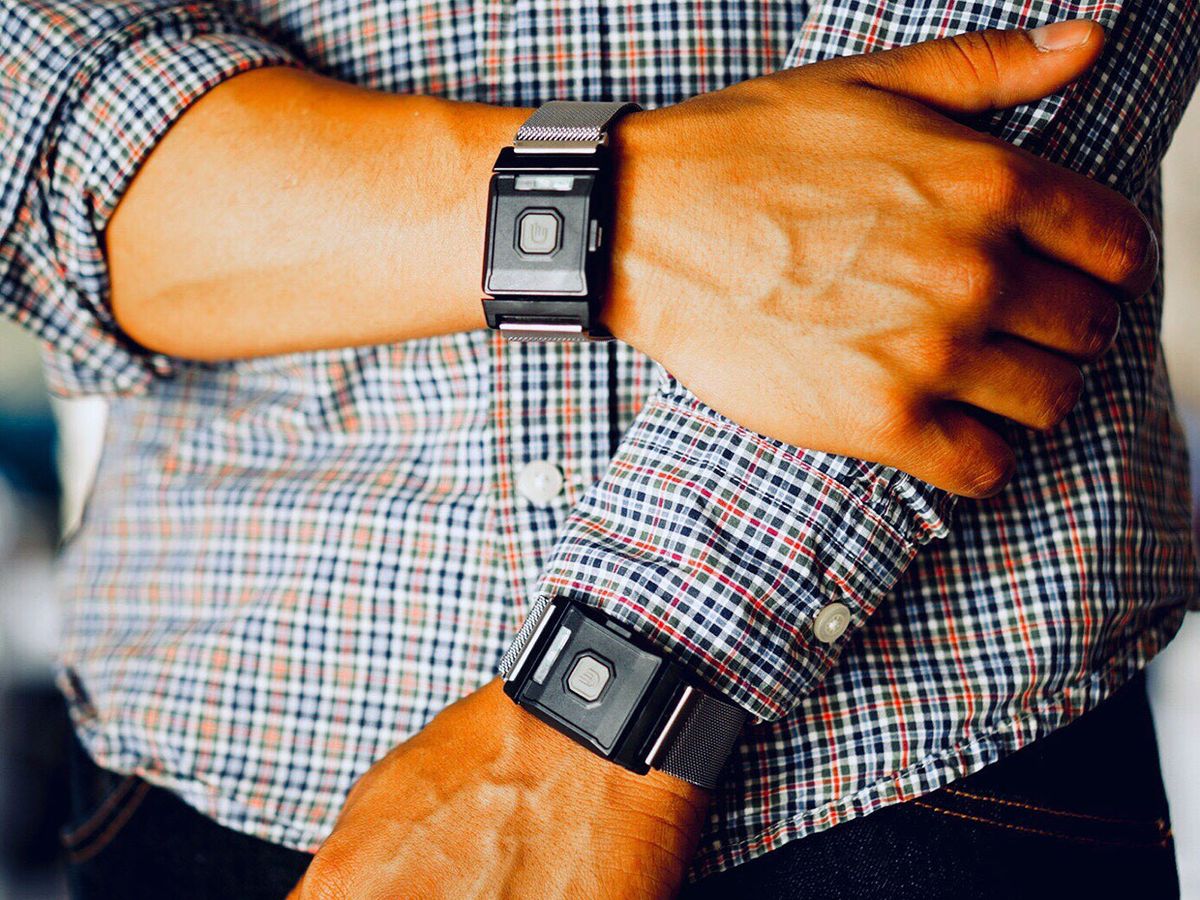Gadgets that promise stress relief aren’t new to CES, the giant consumer electronics show held in Las Vegas this week. Biofeedback wearables that prompt you to work on your stress response and measure your success by tracking your heart rate or brain waves have been around for years. That approach takes effort and practice, however.
This year at CES, I saw three wearables that aim to relieve your stress with no effort on your part, other than the effort it takes to switch them on. And they’re easier to carry into a meeting or presentation than a massage chair.

The US $219 Doppel, worn on the inside of the wrist, pulses in rhythms intended to simulate a heartbeat. The wearer can adjust the speed depending on whether he or she wants to calm down or get energized.

Marketing materials for the $299 Embr Wave don’t mention stress relief. Rather, the device, worn on the underside of the wrist, promises “thermal wellness.” That means, it warms you up if you’re feeling cold and cools you down if you feel hot. But when I spoke to company representatives, they pointed out that the feeling of being warm or cold isn’t just a sensation created by the physical environment—those feelings can come from emotions, as well. So the gadget could also help in stressful situations. (Indeed, experiments have shown that warming your hands can make you feel more social and friendly.)

Finally, I saw TouchPoints. This approach involves two small gadgets, paired through Bluetooth, that vibrate in an alternating rhythm. They can be worn on the wrists, held in the hands, or tucked into pockets or socks, as long as they’re positioned on opposite sides of the body. And the $160 gadget seems to have even more science behind it than the other stress reduction wearables.
Dominic Di Loreto, who is director of applied neuroscience at the Serin Center, a psychological and neurological treatment center in Peoria, Ariz., represented TouchPoints at CES, and said using bilateral stimulation to interrupt the stress response was based on research about PTSD. The first customers for the gadget (introduced in mid-2018) have been parents who use it to calm their children, particularly those with special needs, and students who use it to defray stress during exams.
Tekla S. Perry is a senior editor at IEEE Spectrum. Based in Palo Alto, Calif., she's been covering the people, companies, and technology that make Silicon Valley a special place for more than 40 years. An IEEE member, she holds a bachelor's degree in journalism from Michigan State University.



